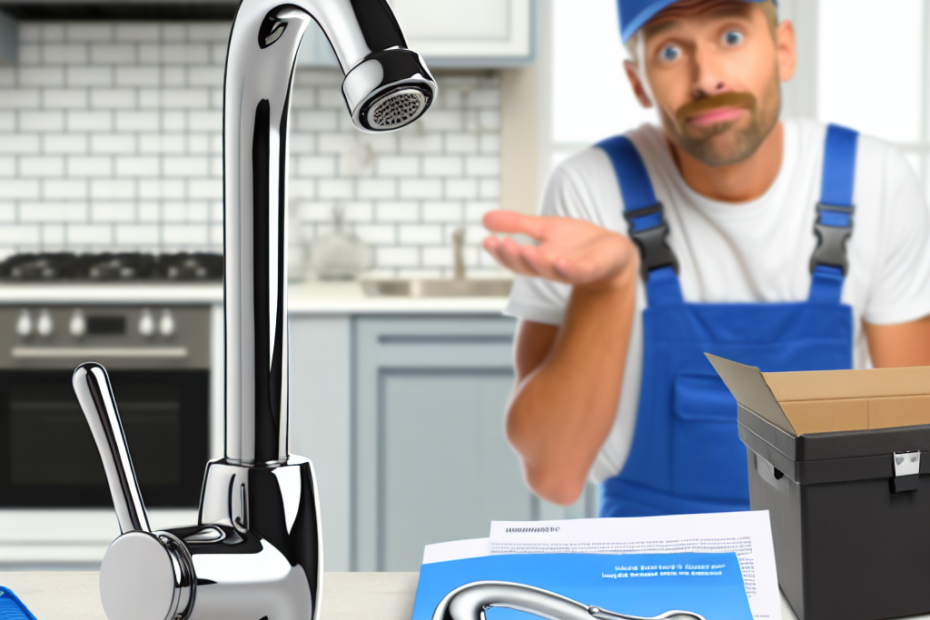An Ultimate Guide On Fixing A Leaky Kitchen Faucet
A leaky kitchen faucet can be a real pain. Not only does it waste water, but it can also drive up your water bill. The good news is you can fix it yourself. This guide will help you understand how to identify the problem and solve it easy.
Why Is My Kitchen Faucet Leaking?
When you notice water dripping from your faucet, it is often caused by worn-out parts. There are a few common causes:
| Common Causes | Description |
|---|---|
| Worn-Out Washers | The rubber washers wear down over time. |
| Corroded Valve Seat | Over time, it can corrode and wear out. |
| Loose Parts | Sometimes, you just need to tighten loose screws. |
| Damaged Cartridge | In cartridge faucets, the cartridge can break. |
Understanding these reasons is the first step in fixing your leaky faucet.
Tools & Materials You’ll Need
Before you start, gather the right tools and supplies. Here’s a list:
- Adjustable wrench
- Screwdriver (flat-head and Phillips)
- Replacement washers or cartridges
- Plumber's grease
- Bucket or towel
- Pliers
Having everything ready will make the repair smoother.
Step-by-Step Guide to Fix Your Leaky Faucet
Let’s break down the process. You can follow these steps to fix most kitchen faucets.
Step 1: Turn Off Water Supply
First, locate the water shut-off valves under your sink. Turn these to the right until they stop. If you can’t find them, turn off the main water supply to your home. Next, open the faucet to drain any excess water. This will prevent water from shooting out when you start working.
Step 2: Plug the Drain
To avoid losing small parts, plug the sink drain. You can use a rag or a sink stopper. This little step can save you a lot of trouble later!
Step 3: Remove the Faucet Handle
Using the screwdrivers, remove the screws holding the handle in place. If your handle has a decorative cap, pop it off with the flat-head screwdriver to find the screw underneath. This is often where leaks begin, so be careful and take your time.
Step 4: Inspect Internal Parts
Once the handle is off, check the internal parts:
- Look for washers—are they cracked or dirty?
- Check for any corrosion in the valve seat.
If you see wear or damage, it’s time to replace those parts.
Step 5: Replace the Washer or Cartridge
Replacing a Washer
If your faucet uses a washer, here’s how to do it:
- Remove the old washer. It can be stuck, so use pliers if needed.
- Take the washer to the hardware store to find a matching size.
- Install the new washer. Apply a small amount of plumber's grease to help it seal.
Replacing a Cartridge
If your faucet uses a cartridge, follow these steps:
- Pull out the old cartridge gently.
- Clean the cartridge seat.
- Insert the new cartridge. Align it properly.
This is crucial. A misaligned cartridge can lead to further leaks.
Step 6: Reassemble the Faucet
Once you have replaced the necessary parts, it’s time to put everything back together. Follow the steps in reverse:
- Place the handle back on.
- Tighten the screws securely.
- If applicable, snap back the decorative cap.
Make sure everything is snug, but avoid overtightening. This can crack parts.
Step 7: Turn Water Supply Back On
With everything assembled, it’s time to open the water supply. Turn the shut-off valves counter-clockwise. Slowly turn on the faucet.
Step 8: Check for Leaks
Observe closely for any dripping or leaks. If water is still escaping, something may not be seated properly. Repeat the previous steps if needed.
Maintenance Tips to Prevent Future Leaks
To keep your kitchen faucet in top shape, consider these maintenance tips:
- Regularly clean: Check and clean your faucet parts every six months.
- Avoid harsh chemicals: Use mild cleaners around the faucet.
- Watch for signs of wear: If you see any wear or hear strange noises, investigate right away.
This proactive approach can save you time and hassle in the long run.
When to Call A Professional
Sometimes, fixing a leaky kitchen faucet isn't easy. If you notice:
- A constant leaking after repair attempts
- A significant water buildup
- Any strange noises or smells
It may be best to call a professional plumber. They have the tools and experience to handle tricky plumbing issues safely.
Common Faucet Types and Their Components
Let’s briefly review common types of kitchen faucets and their parts. This can help you understand better what you’re dealing with.
| Faucet Type | Components | Common Issues |
|---|---|---|
| Compression Faucet | Washers, Bonnet, Stem | Leaks from the spout or around the handle. |
| Cartridge Faucet | Cartridge, Handle, Spout | Leaks due to damaged cartridges. |
| Ball Faucet | Ball assembly, cam assembly | Leaks from the spout or under the handle. |
| Disc Faucet | Ceramic discs, cartridge | Leaks due to worn discs or seals. |
Knowing your faucet type will help you when buying replacement parts.
Conclusion
Fixing a leaky kitchen faucet may seem daunting, but with the right steps, tools, and a bit of patience, you can do it! Remember to always turn off the water supply before starting, gather your tools, and take your time with each step.
Follow the suggestions given in this guide, and you not only save money but also enjoy a more efficient kitchen. If you find that your repair efforts fail or the leaks return, don’t hesitate to consult a professional for assistance.
Whichever way you choose, you'll be more informed and prepared next time a drip appears. Good luck with your projects!
